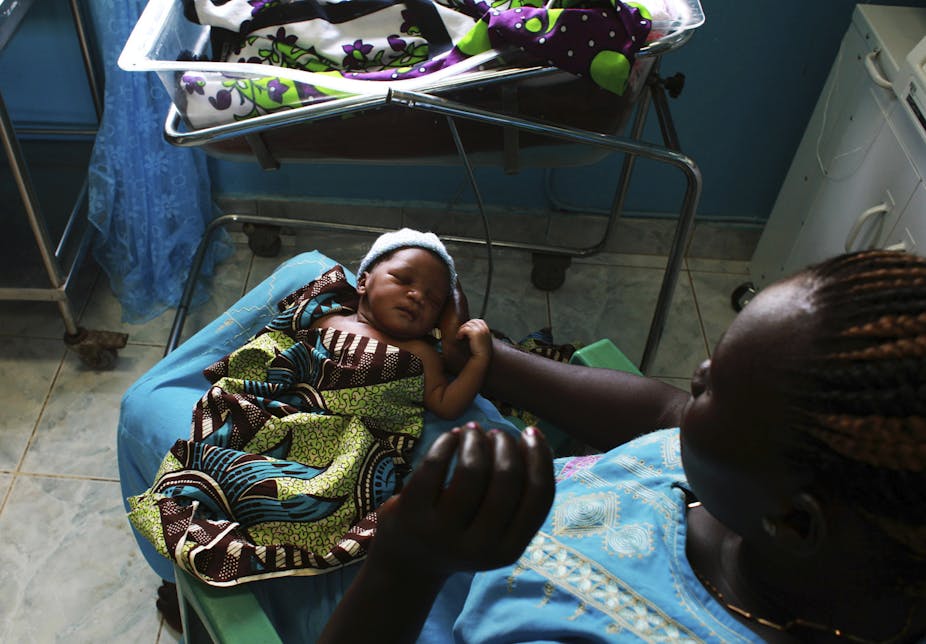There is a lot of hard work ahead for African governments if they plan to reach the new targets around maternal mortality and deaths of newborns and children under the age of five as per the Sustainable Development Goals.
The sustainable development goals were created to guide global development initiatives and are a follow to the anti-poverty Millennium Development Goals, which come to an end this year. There are 169 targets in the 17 new Sustainable Development Goals with an end date of 2030. These were agreed on by more than 150 world leaders at the United Nations Development Summit in September 2015.
Goal three, which relates to health, has nine targets. In terms of maternal mortality, the bold new aspiration is that countries will reduce global maternal mortality rates to less than 70 deaths per 100,000 live births by 2030. For child and newborn deaths, all countries are aiming for a neonatal mortality rate of 12 deaths per 100,000 live births and under-five mortality of 25 per 100,000 live births by 2030.
With 289 mothers dying for every 100,000 births in Africa each year, more mothers are dying in childbirth in Africa than anywhere else in the world. To reach the new targets, Africa would need to reduce its maternal mortality rate by three-quarters in the next 15 years. This rate of reduction would require a sharp acceleration of efforts.
There are simple, proven and cost-effective solutions that could help Africa reach these goals. But there are substantial gaps in access to and use of services, quality of care, and health human resource capacity which make these solutions difficult to implement well.
Missed targets
Africa struggled to meet the first set of targets in the Millennium Development Goals.
Of the eight goals, Africa had made the least progress on the targets around improved maternal health. The continent has the highest maternal mortality ratio in the world. It records 289 maternal deaths for every 100,000 live births. This is compared to a world average of 21 deaths for every 100,000 births.
Only four of its 54 countries – Cabo Verde, Equitorial Guinea, Eritrea and Rwanda – met the target of reducing the maternal mortality rate by 75% according to 2013 data.
For its target to reduce child mortality, Egypt, Ethiopia, Liberia, Malawi, Tunisia and Tanzania met the under-five mortality rate target of 66.67%. Eleven other countries are very close.
But these statistics mask massive geographical and geopolitical differences. In the words of the MDG 2015 report:
Millions of people are being left behind especially the poorest and those disadvantaged because of their sex, age, disability, ethnicity or geographic location.
Serious investment needed
Africa has failed to fully attain the millennium development goals for several reasons. These include a lack of investment, poor political commitment and inadequate resource allocation, all of which continue to be challenges.
Most mothers die from entirely preventable complications including haemorrhage, infections, and blood pressure-related conditions.
Most children die in their first year of life – and newborn deaths are very common. Newborn deaths are a result of complications during labour and delivery, preterm births, or sepsis.
To improve the lives of mothers and children, the continent must commit a substantial and sustained financial investment into the health sector. This will facilitate an aggressive scaling up of the existing health interventions and the systems to deliver them.
There are four initiatives that are needed. First, access to family planning and childhood vaccination should be prioritised. For both these interventions the costs of rapid scale up are quickly offset by significant health impacts. Satisfying the unmet need for family planning alone could cut maternal deaths by as much as 30%.
Second, governments must also continue to encourage and enable facility-based deliveries and deliveries conducted by skilled birth attendants. There needs to be an emphasis not just on accessibility but on quality of care too so that where facilities exist, the care provided is evidence-based, respectful, and effective.
Skilled birth attendants must be properly trained and accredited to do the job. Averting the top causes of maternal and child death must remain the core mission of health facilities.
Third, healthcare workers are essential for health service delivery. Domestic spending on improving the quantity, skills and geographic distribution of health human resources must be increased. Stakeholders in maternal, newborn and child health need to learn to communicate better to best use limited resources and minimise duplication.
And finally, a key lesson learned from the millennium development goals is that data and measurement are important – both for monitoring, reporting and accountability, and for strategic, financial and programmatic decisions. African countries will need to strengthen both health data collection and the quality of that data. African communities are increasingly demanding to see accurate data too.
There has been significant innovation and growth in the area of development data collection and the setting up of development databases, the adoption of electronic health information systems, and data tracking for real-time decision-making, which should make this fairly easy to implement.
Learning lessons
As the Millennium Development Goals come to an end, there remains unfinished business in Africa around them. There is hope that through the lessons learnt in the past 15 years, implementing actions as part of the post-2015 Sustainable Development Goal agenda can be expedited.
African governments stand to gain a great deal from this. African women, children, families and communities stand to gain even more.
* Dr Shalmali R Karnad is a clinical programmes manager at Jacaranda Health, a social enterprise which sets up private maternity clinics in Kenya. She was integral in the writing of this article.*

